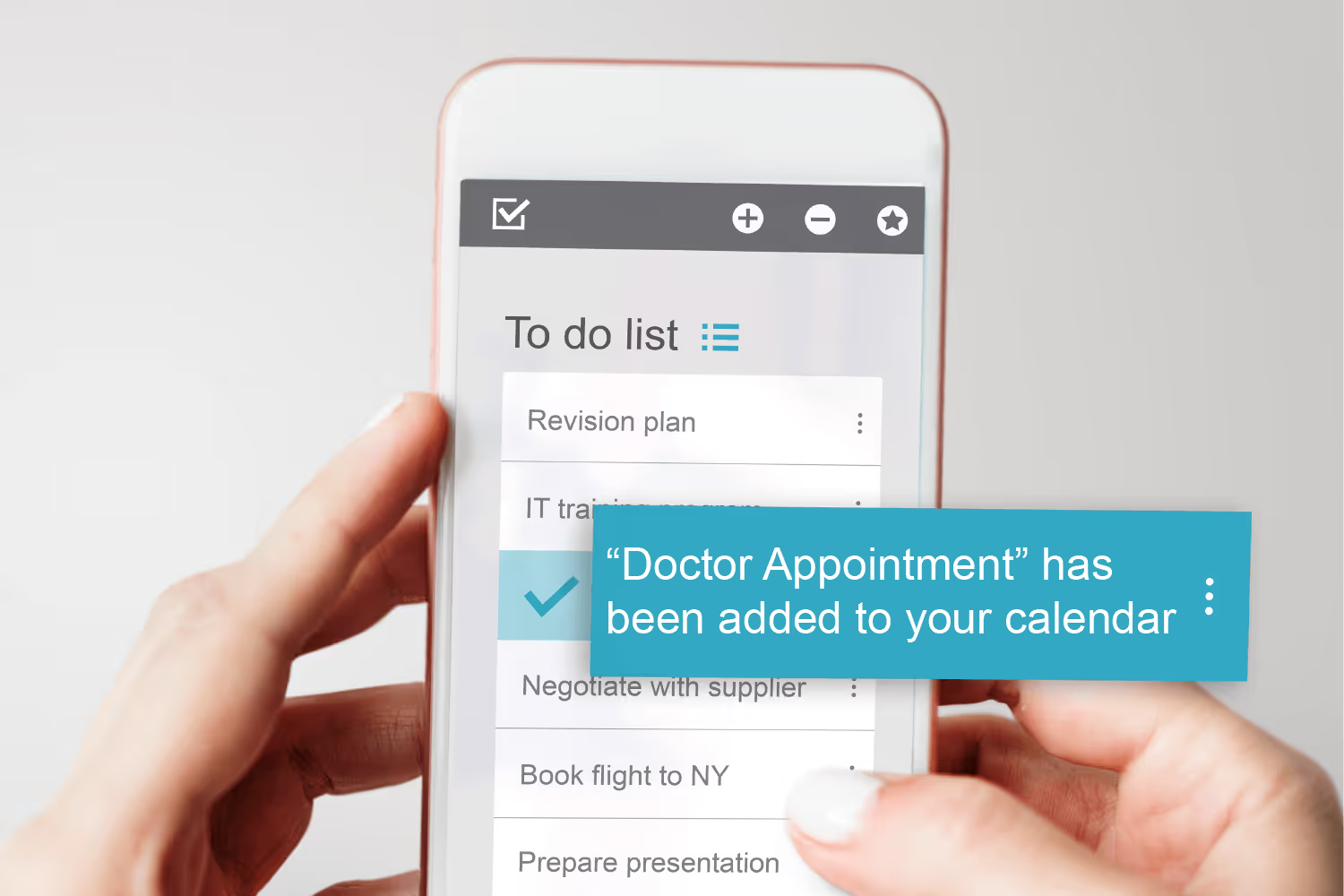20 Healthcare Trends in 2020 to Keep in Mind for The Next Decade
The new decade is an exciting time, especially within the medical industry. Many healthcare trends from the past year are rolling into 2020 and they’re setting up the next ten years for major changes. Here are twenty healthcare trends that your organization can start focusing on in 2020 to improve.

The new decade is an exciting time, especially within the medical industry. Many healthcare trends from the past year are rolling into 2020 and they’re setting up the next ten years for major changes.
Of course, it also means it's time to set new resolutions and goals to achieve. Change can be good and should be met with enthusiasm. If you start now, you’ll be able to position yourself for success at the beginning of this decade. But these goals and changes don’t have to stay at the individual level.
Your health practice should set resolutions, too. No organization is perfect, there’s always room for improvement.
These major shifts aren’t something you should be apprehensive about, it’s an opportunity to set your organization up for success in the new “roaring twenties.”
Here are twenty healthcare trends that your organization can start focusing on in 2020 to improve.
Adopting AI Technology
Artificial intelligence technology is on the rise. From 2019 alone, we saw so many AI advancements. These technologies will accelerate medical processes and relieve some tasks from medical professionals.
While there have been so many AI developments, adoption across healthcare has been slow. Some practices aren’t prepared for the growth of AI. They don’t yet have proper security for the systems, the time to train staff on technologies, or they fear these systems will devalue employees’ work.
But these tools are not intended to take over jobs. The goal is to reduce cumbersome tasks so professionals can focus their attention and skills on patients.
These technologies help streamline workflow and enhance health productivity while reducing costs, take a look at healthcare chatbot advancements as an example. By streamlining time-consuming processes, there is more time to focus on patients.
Try to make it a priority to adopt new AI technology. Of course, ensure that your organization is ready for this endeavor. You will need proper cybersecurity for many of these technologies. Also, strategize a training strategy with your team leaders before adoption. You don’t want to overwhelm your employees with tools that should reduce stress.
Seeking Better EHRs
Most organizations use electronic medical records now. If you don’t, end-of-life software might be something worth looking into. These systems reduce work time. By recording electronic notes, doctors don’t need to take notes by hand. This should save a lot of time and effort so they can focus more on patients.
But throughout 2019, many reports showed that many EHR systems have an adverse effect. They have a clunky user interface design, which takes up and unnecessary amount of time. EHRs contribute to physician burnout and job dissatisfaction since they take time away from patients.
These systems have so much potential to assist doctors, but in their current state, they often make work more stressful. If your current system is difficult to use, look into new options. Many organizations recognize these difficult workflows and are trying to change them. This is especially possible through AI technology. With an improved system, your employees can record notes quicker and focus more on patient care.
Nurturing Patient Relationships
Patients are the oil to your machine. It can’t run without it. Health organizations wouldn’t exist without them. This year, make it a priority to develop relationships with your patients.
The majority of doctors are busy, leaving less time to devote to their patient. This undermines the patient-doctor relationship. If patients don’t feel valued, they may end up switching practices.
If doctors don’t have time to nurture their patient relationships, this is where other staff members can shine. Engage with patients through every step of their journey once they schedule their appointment.
One way doctors or nurses could show they care in the new year is by encouraging their patient’s resolutions. Many people set health-related resolutions, but 80% of people fail. Most of which by mid-February.
If your patients have set health resolutions, help them map out a way to achieve them. Some may fail because they’re setting unrealistic, or even unhealthy, goals. But helping them create an attainable planned goal may motivate them to keep working at it.
This short activity shows that you care about their health, value their goals, and want to share expertise on how they can be successful.
Sending Patient Satisfaction Surveys
This goes hand-in-hand with patient relationships. Asking for patient feedback on their experience shows that you care about your services. Patients appreciate knowing that you’ll take the time to improve areas that they aren’t happy with.
These surveys give insight on how to keep patients by drawing attention to where you can improve. Surveys will help you set new resolutions, too, since you’ll know which areas you need to enhance. They’re also a great way to source patient testimonials.

Securing Your Systems
Since healthcare technology continues to grow, your organization needs to maintain proper security. Data breaches and cyberattacks continue to be a problem among health organizations. Hackers are getting more creative with their attacks while actively seeking outpatient health information (PHI).
Your organization must ensure your security is up to date, even if it requires you to outsource to an MSSP. Without proper security, your systems are so vulnerable to breaches. A breach would damage your organization’s reputation and lead to stolen information, harming patients. Not only that but if a breach forces your practice into downtime, patients can’t receive the care that they need.
Not only will you lose revenue, but there are costs related to legal fines or ransomware payments. Data breaches can be huge financial burdens that could cause a permanent shutdown.
Now, breaches aren’t always preventable. Even secure systems can face attacks. This is why your organization should prepare for them. If you have a plan set in place, then you’ll be ready to handle any attacks if they occur. This requires proper employee training, which leads us to our next resolution.
Training Employees on HIPAA
Cyberattacks aren’t the only way that PHI leaks onto the dark web. Employee actions may also result in compromised data.
Healthcare employees must follow the Health Insurance Portability and Accountability Act (HIPAA). Those who aren’t trained on HIPAA could expose PHI either by accident or on purpose.
There are so many ways that employees may cause a breach of PHI. Employees often discuss PHI with unauthorized individuals or post PHI on social media.
They also might access information out of curiosity which violates HIPAA. Unfortunately, this happens most often when celebrities stop by for hospital visits.
Another common violation occurs by clicking malicious links embedded within phishing emails. They may appear safe, but hackers send these emails in attempts to gain access to networks. All it takes is one unsuspecting employee to click the link to compromise your data.
Your organization can better prevent these by properly training your staff on HIPAA. Even if you think your staff knows how to follow this omnipresent regulation, they may not understand its consequences. Make it a point this year to train, or re-train, your employees on how to remain compliant.

Being Price Transparent
When we go to the store, we see the cost of items before buying them. We have an idea of how much our total bill will be and there are no hidden surprises.
Unfortunately, it doesn’t always work like this in healthcare. Surprise billing is a big issue, and sometimes these medical statements are just too expensive. They didn’t expect the cost, but now they have to find a way to pay for these costly services.
This leads to problems for your organization and patient. If payment isn’t received, your organization loses revenue.
Issues surrounding surprise billing is leading to a push for price transparency. Organizations are developing tools for patients to see what their estimated cost is before receiving a service. This allows them to “shop around” for a healthcare provider. If they know that one organization offers more affordable services, they will more likely use that practice.
Make it a goal this year to become more price-transparent. In retail, no one likes going to check out and hear their total is way higher than they expected. So why have this happen within healthcare?
Not every facet of being more transparent is within your control. But transparency about service costs and insurance coverage builds trust. Your patients will see you as credible and honest, and they will want to keep using your services.
Using Telehealth or Mobile Health
Telehealth and mobile health are other tools you can’t pass up on this decade. Our current social norms deal with instantaneous choices, feedback, and reviews. Going to the doctor takes time out of our schedules that frankly many see as an inconvenience. Getting patients to schedule an appointment is already hard enough, having them show up is an entirely different problem to tackle. Either way, if they’re not coming to you, they’re neglecting their health.
Not only do people avoid appointments for convenience reasons, but some physically can’t make it to the doctor. This might be because they are too sick or due to location. Rural areas lack healthcare options and have limited transportation to necessary organizations.
This is why telehealth and mobile health are exploding in the industry. Telehealth connects patients to health professionals across various technology platforms. This allows virtual visits with necessary professionals for evaluations, referrals, and medication prescriptions.
Mobile health can connect patients and doctors on a more local scale. It’s already common for nurses to make in-home visits to patients. This is typical for elderly patients or those who just had surgery.
Now, doctor visits to homes are “back in style.” One method is with the Heal app which patients use to request services that doctors bring to their homes.
This type of service keeps contagious patients, such as flu patients, out of hospitals. These germs aren’t helpful to have in the hospital where patients are trying to heal from other illnesses, injuries, or surgeries. Especially if the hospital’s tight on space.
Patients also may feel too sick to drive themselves to the doctor. By having doctors come to them, they are still able to receive the care they need.
Johnson Health Center offers a similar option for rides to appointments. The center provides free transportation to and from appointments for any patient who needs a ride. The service started in 2017 for Amherst County and Lynchburg, but the practice now has a second van available. This allowed the center to expand the service to Bedford and Campbell counties. Patients can schedule their ride in person or via phone when they schedule their appointment.
Schools have also adopted mobile health options. Madera County, California, developed a mobile health center for the Madera Unified School District. It’s a wheelchair accessible bus that resembles a fancy tour bus.
School nurses and physicians can use this unit for vaccinations, vision and auditory screenings, athletic physicals, counseling sessions, and more. The purpose is since the school campuses do not have space for health services. Some students are from rural families who have a harder time traveling to care-providers.
Both telehealth and mobile health are allowing people who can’t access health services to receive appropriate care. These services are also cheaper, so those with financial burdens may access more options.
Of course, these aren’t services that you can immediately start, but your organization can start small to implement them. Evaluate options that would better serve your patients, ask them for feedback on ideas to determine if it’s worth the cost, and develop a plan.
Monitoring with Wearables and Implantables
One in six American adults wears a smartwatch. The demand for wearables is high because of the convenience to track health information in real-time.
Your organization can have your patients use these devices to track their fitness and basic health data. Patients’ daily health levels provide insight into health changes. Health professionals can then flag any skeptical changes that may need attention.
Smartwatches aren’t the only wearable device that organizations use to track health. The United States Department of Defense and Royal Phillips developed a tool that troops can wear to predict infection. The technology measures daily health metrics to detect infection up to 48 hours before symptoms appear. The creators are also expecting wide use of the tool in civilian settings.
Implantables have been around for many decades now but continue to trend upward. Sales within this industry alone should see $543.9 billion in sales this year. Recommending patients these devices is situational but be cognizant when doing so. There were instances last year of hackers exploiting these devices.
Developing Marketing Strategies For Your Practice
Along with developments in technology is the increased use of the Internet. More than 70-80% of people will research a business online before choosing to use its services. Individuals even try to diagnose their symptoms using the web.
This is why it’s so important that your organization has an online presence. By making yourself known on media platforms and proving that you’re experts, people will discover you.

There are so many ways that you can market your organization. Staying up-to-date with current trends is important for driving traffic to your organization. TikTok is one social platform that exploded in 2019. It may seem daunting to learn new online marketing strategies. But getting popular on social media comes with practice and a solid strategy. Once you achieve both, your practice will thrive.
Updating your website and staying active on social media will make it easier to discover your practice, so you’re more likely to gain new patients.
This year, develop several strategies to boost your marketing efforts. Consider your demographics and what would work best with them. Don’t give up if you don’t immediately see an outcome. You can always tweak your strategy, but it takes time for online efforts to have results.
There are marketing strategies that don’t need a large budget or bandwidth. Word-of-mouth strategies, in particular, make a big impact because consumers value their peers’ feedback.
Evaluating Vendors for Compliance
Your organization most likely doesn’t complete all tasks related to your practice on its own. Most practices will use an outside vendor for some product or service. Take time this year to evaluate your current vendors.
Analyze if your vendors are meeting your current needs, or if there’s room for improvement. If the services aren’t working for your organization, reach out to the vendor. There may be other tools they offer to improve these services, or they may recommend a partner of theirs that can help. Express to them your pain points, and see if they can help.
This evaluation process also comes back to cybersecurity. Make sure your third-party vendors are compliant with the regulations required within healthcare. While your organization may be secure, theirs may not be.
A majority of healthcare data breaches in 2019 were a result of third-party vendors. Monitor vendor activity and ensure proper authorization to your system’s information.
Outsourcing Tasks When Possible
So you might be using vendors for some products and services. But there may be other laborious tasks that your practice still handles that take time away from more important duties.
Use this year to evaluate your current vendors, but also consider where more vendors may be helpful. Change can be scary, and we often continue going with the flow even if we’re struggling. But start eliminating pain points now. The sooner you do this, the sooner you can turn your attention to more important processes.
Consider your system’s struggles, vendors that can help, and technologies that can reduce any problems.
Conducting Health Inspections
Health practices should be the last place to fail a health inspection. Patients won’t want to go somewhere to heal if it failed a health inspection.
Individuals go to health practices because they’re sick, so they’ll bring in germs. Your organization needs to maintain proper sanitation to limit the spread of these germs.
Ensure that your employees follow sanitation protocols. If your practice conducts frequent health inspections, people will trust that it’s safe and sanitary to visit.
Reducing No-Shows
It’s no secret that no-shows are costly for your organization. No-shows mean less revenue, and they waste valuable appointment times that other patients could use.
This year, try to reduce no-shows. There are strategies you can set in place for getting patients to come in for their scheduled appointments.

There could be thousands of reasons why patients don’t show up for their appointment. Determining their reason is only half the battle. The other half is figuring out how to get them into your office for their scheduled appointment.
You may even have a documented penalty for those who don’t walk through your doors when they’re supposed to.
Either way, conduct an internal audit on your no-shows this year to determine how many appointments you’re losing on average per year. This number will motivate you for the coming decade.
Climbing Front-End and Back-End Office Silos
Improving communication could be a resolution for anyone. But for healthcare practice, it can be a big deal. We’ve already mentioned the importance of relationships with both patients and employees. But communication across all departments is so important, especially for your revenue cycle.
Communication between your office and the billing team is necessary for preventing claim denials. If your front-end office makes mistakes that cause denials but your billing team isn’t communicating this, there’s a gap in your process.
Informing the front-end team on mistakes helps reduce denials. This, in turn, makes the billing team’s job easier if the front-end team will submit clean claims.
Using Precision Medicine
Precision medicine is an emerging concept for disease treatment and prevention. It factors in the genes, environment, and lifestyle for each person to determine methods of treatment for the individual.
This method differs from the “one-size-fits-all” approach. It allows professionals to predict which treatments will work best for individual patients. Knowing patients’ genomic information can help detect and prevent disease in the early stages.
Implementing this method is not an immediate effort. But precision medicine has the potential to revolutionize the health industry. It’s set to go mainstream, so start assessing ways that precision medicine can benefit your organization’s treatment process.
Increasing Mobile Phone Usability
By now, you know that technology expansion is happening fast. This is happening within the health industry, and in so many areas of consumers’ daily lives.
Online and mobile options are convenient and these consumers value quick access from phones. This applies to healthcare, too.
Consider ways that your practice can execute online services for your patients. We already discussed the option of telehealth, but there are other online aspects that consumers can use.
Paying bills is a tedious task by the time patients receive their pay, write a check, buy a stamp, and take their payment to a mailbox. But with technology, patient payment happens faster than ever. If patients can do this from their phones, they can pay their bills from anywhere at any time. This reduces the risk of payments being late. It saves paper, time, and a stamp.
You could also use text or email appointment reminders. This helps those who are always on the go and might not have time to answer a phone call reminder. Seeing the reminder on their phone will help reduce no-shows. They can even add the appointment to their calendar when they receive the notification.

Your organization could even create a system for patients to schedule appointments online. It can be difficult to find free time during the workday to call and schedule an appointment. It’s even harder if your phone is always busy with patients calling. If patients can schedule right from their phone or computer, it saves your front office team time.
Moving to a Value-Based Care Model
The value-based care model rewards providers based on patient health outcomes instead of a fee-for-service approach. It measures health outcomes against the cost of delivering the outcomes.
This model helps improve patient health in an evidence-based way. This model benefits patients, providers, payers, suppliers, and society.

https://catalyst.nejm.org/doi/full/10.1056/CAT.17.0558
This new method has a team-oriented focus on patient care. Everyone involved must work together to provide care with positive and beneficial outcomes.
If professionals receive payment based on performance and outcomes, they will have more incentive to work toward positive results.
Helping Your Employees
Mental health issues are so common among health professionals. Burnout and depression are increasing problems with these workers. Don’t only focus on how to improve patient interactions, but also focus on ways to help employees.
Without healthcare workers, there are no patients. If these workers don’t receive the resources they need, they can’t effectively do their jobs. Ask your employees what they need for the best performance and if any new resources could help.
Giving Yourself a Break
Keeping up with all of these areas is a lot of work. As mentioned before, many healthcare professionals already struggle with mental health issues.
Both nurses and doctors plan to reduce work time because of dissatisfaction that stems from these issues. This is why healthcare professionals must take breaks.
Make it part of your resolution to take time for yourself and have a break to recharge. If you constantly focus on work even at home, you will experience too much exhaustion to work efficiently.
It’s important for your mental health that you take time for other activities that you enjoy. This makes your work more meaningful.
Conclusion
Use the beginning of this year to consider areas of your practice that could use improving. Set goals that could benefit these areas, and develop a plan for achieving these goals.
Even if some of these seem impossible and need a lot of work, baby steps in the right direction can make a difference. Set realistic goals so that they don’t crumble in the first few months, and work on progressing as the year goes on.
Emphasize your product's unique features or benefits to differentiate it from competitors
In nec dictum adipiscing pharetra enim etiam scelerisque dolor purus ipsum egestas cursus vulputate arcu egestas ut eu sed mollis consectetur mattis pharetra curabitur et maecenas in mattis fames consectetur ipsum quis risus mauris aliquam ornare nisl purus at ipsum nulla accumsan consectetur vestibulum suspendisse aliquam condimentum scelerisque lacinia pellentesque vestibulum condimentum turpis ligula pharetra dictum sapien facilisis sapien at sagittis et cursus congue.
- Pharetra curabitur et maecenas in mattis fames consectetur ipsum quis risus.
- Justo urna nisi auctor consequat consectetur dolor lectus blandit.
- Eget egestas volutpat lacinia vestibulum vitae mattis hendrerit.
- Ornare elit odio tellus orci bibendum dictum id sem congue enim amet diam.
Incorporate statistics or specific numbers to highlight the effectiveness or popularity of your offering
Convallis pellentesque ullamcorper sapien sed tristique fermentum proin amet quam tincidunt feugiat vitae neque quisque odio ut pellentesque ac mauris eget lectus. Pretium arcu turpis lacus sapien sit at eu sapien duis magna nunc nibh nam non ut nibh ultrices ultrices elementum egestas enim nisl sed cursus pellentesque sit dignissim enim euismod sit et convallis sed pelis viverra quam at nisl sit pharetra enim nisl nec vestibulum posuere in volutpat sed blandit neque risus.

Use time-sensitive language to encourage immediate action, such as "Limited Time Offer
Feugiat vitae neque quisque odio ut pellentesque ac mauris eget lectus. Pretium arcu turpis lacus sapien sit at eu sapien duis magna nunc nibh nam non ut nibh ultrices ultrices elementum egestas enim nisl sed cursus pellentesque sit dignissim enim euismod sit et convallis sed pelis viverra quam at nisl sit pharetra enim nisl nec vestibulum posuere in volutpat sed blandit neque risus.
- Pharetra curabitur et maecenas in mattis fames consectetur ipsum quis risus.
- Justo urna nisi auctor consequat consectetur dolor lectus blandit.
- Eget egestas volutpat lacinia vestibulum vitae mattis hendrerit.
- Ornare elit odio tellus orci bibendum dictum id sem congue enim amet diam.
Address customer pain points directly by showing how your product solves their problems
Feugiat vitae neque quisque odio ut pellentesque ac mauris eget lectus. Pretium arcu turpis lacus sapien sit at eu sapien duis magna nunc nibh nam non ut nibh ultrices ultrices elementum egestas enim nisl sed cursus pellentesque sit dignissim enim euismod sit et convallis sed pelis viverra quam at nisl sit pharetra enim nisl nec vestibulum posuere in volutpat sed blandit neque risus.
Vel etiam vel amet aenean eget in habitasse nunc duis tellus sem turpis risus aliquam ac volutpat tellus eu faucibus ullamcorper.
Tailor titles to your ideal customer segment using phrases like "Designed for Busy Professionals
Sed pretium id nibh id sit felis vitae volutpat volutpat adipiscing at sodales neque lectus mi phasellus commodo at elit suspendisse ornare faucibus lectus purus viverra in nec aliquet commodo et sed sed nisi tempor mi pellentesque arcu viverra pretium duis enim vulputate dignissim etiam ultrices vitae neque urna proin nibh diam turpis augue lacus.



![[ANSWERED] What is a Long-Term Care (LTC) Pharmacy](https://cdn.prod.website-files.com/67e2b8210878abcba6f91ae6/68d687806a075a1cf64659b0_WhatisLongTermCarePharmacy_925.avif)
